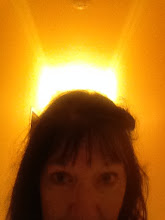The next morning was warmer, so Pliny and Nostradamus drove back to the Carrickalinga Heads carpark where the previous evening they had identified the beginning of a potentially intriguing walk.
They followed the bicycle path past the last holiday house and round a bend until they came to a cow gate. Beyond this they could see a dozen or so cows standing on and either side of a dirt track from which rose on one side a steep and stony bluff matched on the other by a sharp fall onto the rocks below. The cows began to advance meaningfully towards Pliny and Nostradamus, who decided to take a convenient down track to the beach, right then and there.
The beach was in a rocky cove that smelled overpoweringly of hydrogen sulphide. They headed north towards a limestone platform hoping to escape the smell. Here the tilted geosyncline rocks were cracked and broken into regular patterns like the skin of a giant lizard or a dinosaur. They clambered and hopped over the bodies of the rock creatures like tiny fleas. Sometimes they had to step over a fissure at the bottom of which was water or sand. Once halfway down one of these fissures they saw a smooth rock shaped like a baby whale.
After some time they arrived at a spot which looked like a good place to stop. There was a large rock pool in front of them, and on their right a fissure that looked too large to cross. A tangled length of white string joined to a length of green string disappeared into the depths of the rock pool. In other words, a mystery. They sat down on two of the least pointy rocks and stared at the green string. They couldn't see what it was attached to. The water was too ripply. The pebbly stones at the bottom of the pool danced crazily and hypnotically in a green, blue and brown pattern of rounded squares framed in reflected light. Pliny stood up, on a hunch. And was rewarded by the sight of a crab pot, attached to the green length of string.
Pliny and Nostradamus liked that spot. They sat there for a long time looking out to sea. A pod of dolphins passed them, swimming in pairs the way that dolphins swim, arching up out of the water and plunging again to appear a few more metres farther on than they might be expected to be.
Subscribe to:
Post Comments (Atom)

No comments:
Post a Comment